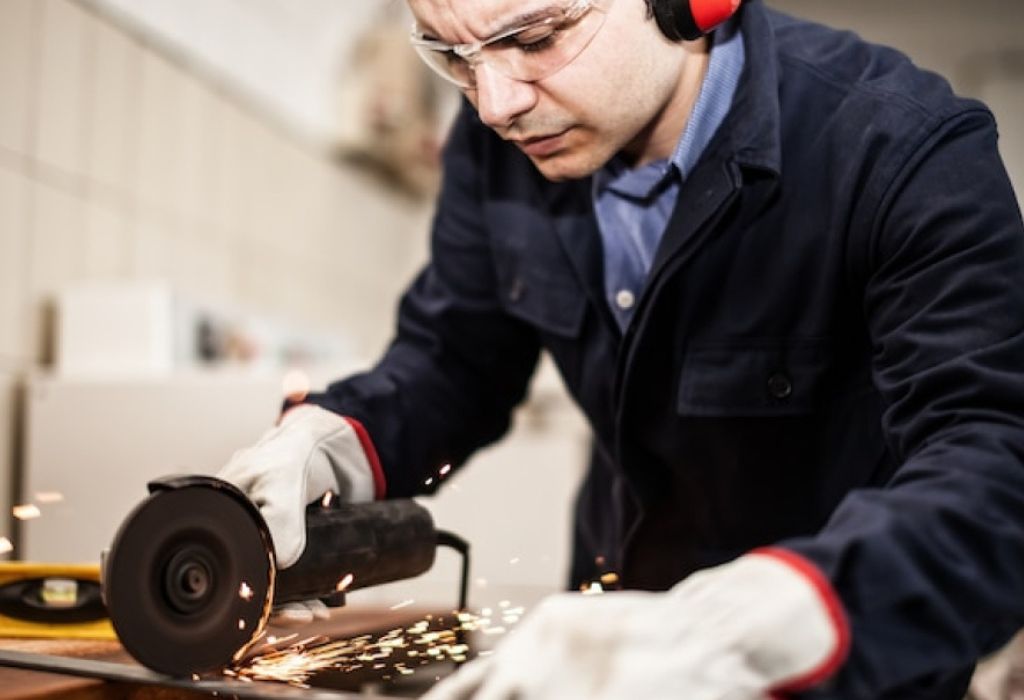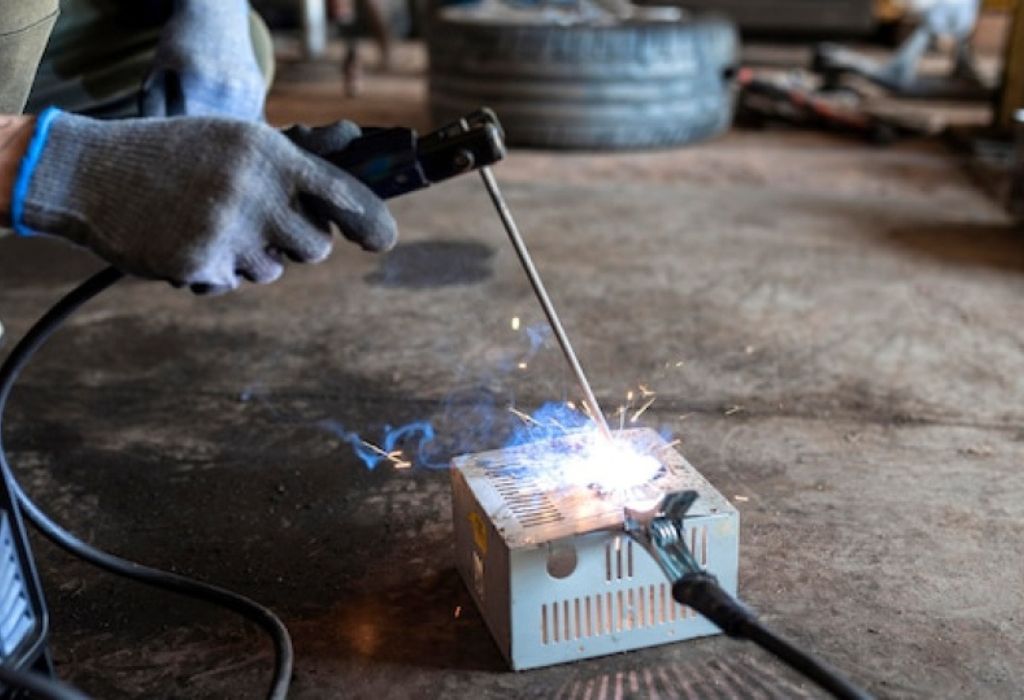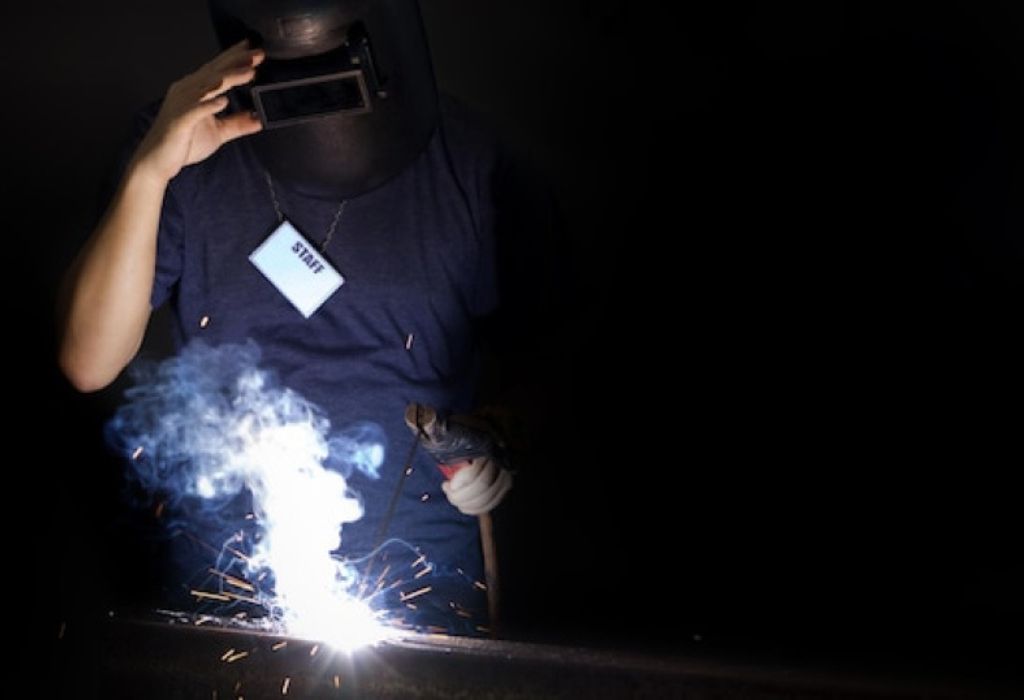First jobs in welding rarely come from guesswork. They come from choosing the right certification for the work that actually hires.
Confusion is normal because employers, codes, and schools all use different terms. The goal is a clear answer to what welding certification do I need for the first paid role.
Welding has steady replacement demand, with about 42,600 openings per year in the U.S. according to the Occupational Outlook Handbook. That volume exists even when overall growth is flat because shops continually need qualified hands (BLS).
Pay scales vary by sector, but the median wage sits around the upper-$40k range for welders, and specialized code work climbs higher with experience (BLS wage data).
This guide maps the shortest path to a hireable credential. It explains the big codes, starter tests, positions, processes, and how to keep continuity valid.
Each section ends with quick Q&A so the next move is obvious and practical.
Certification, License, and Employer Test: What Is the Difference?

A certification proves you passed a performance test to a recognized code under a qualified witness. It is documented as a Welder Performance Qualification (WPQ).
A license is a legal requirement issued by a city or state for certain scopes, separate from a code test.
An employer qualification is a shop test tied to a company Welding Procedure Specification (WPS). It shows you can weld to their procedure even if the record does not travel far.
Beginners usually target a portable certification first, then expect to test again for each new employer.
Q&A
What gets hired fastest?
A portable AWS or ASME performance qualification plus strong practice.
Is a school diploma a certification?
Not unless the school runs witnessed code tests through an AWS Accredited Test Facility.
Do all cities require licensing?
Only a few scopes do, such as certain structural welding in New York City.
Can an employer retest me even if I am certified?
Yes, many shops still qualify you to their WPS.
The Big Codes You Will Hear First
AWS D1.1 governs structural steel for buildings, bridges, and many fab shops. It is the most common first certification.
ASME Section IX covers boilers and pressure piping in plants, refineries, and power facilities.
API 1104 is the pipeline welding standard for transmission lines and related pipeline work.
AWS D17.1 governs aerospace welding with tight tolerances and thin materials.
Q&A
Which code for construction shops?
AWS D1.1 plate in 3G and 4G is the standard starter.
Which for plants and refineries?
ASME Section IX is typical, often GTAW/SMAW on pipe.
Which for pipeline?
API 1104, usually fixed 5G or 6G pipe tests with cellulosic roots.
Which for aircraft parts?
AWS D17.1 with precise GTAW on aluminum or stainless.
The Best Starter Ticket for Most People
Most entry welders start with AWS D1.1 plate in 3G (vertical) and 4G (overhead) using SMAW or FCAW.
This combination demonstrates out-of-position skill and covers flat and horizontal through code provisions.
Shops like it because it mirrors real structural work. It is also cheaper to practice and test than pipe.
The paperwork proves you can execute to a WPS, pass visual inspection, and survive bend tests.
Q&A
Do I need 1G or 2G too?
3G and 4G typically qualify you for those easier positions under D1.1.
SMAW or FCAW for the test?
SMAW is universal; FCAW is common in high-production structural shops.
How long to prep for a first pass?
Four to eight weeks of focused practice is realistic for most beginners.
Will this help in non-structural jobs?
Yes, it signals foundation skill for many fab environments.
Choose by Process: MIG, TIG, Stick, Flux-Core
GMAW/MIG offers speed in production and is common in fabrication. It is often paired with fillets and groove welds on carbon steel.
GTAW/TIG offers precision for stainless, aluminum, aerospace, and sanitary process work.
SMAW/Stick is rugged, simple, and dominant in field and pipe work.
FCAW brings high deposition for structural steel and heavy manufacturing.
Q&A
Which process lands jobs fastest for beginners?
GMAW or FCAW in fab shops and SMAW for field crews.
When is TIG worth the time?
When targeting stainless or aluminum, aerospace, or high-purity pipe.
Do I qualify for multiple processes at once?
No, each process is qualified separately.
What process pays best early?
Pipeline stick work and sanitary TIG often pay premiums after you prove skill.
Positions and Joint Types: 1G to 6G Explained
Positions show out-of-position ability and greatly affect portability. Plate uses 1G–4G, and pipe uses 1G–6G.
6G means the pipe is fixed at 45 degrees and is among the most transferable tests.
Joint types vary by code and WPS. Many beginner tests are groove welds with backing for plate or open-root pipe for pipeline paths.
Learning to control fit-up, root opening, land, and heat input is as important as bead appearance.
Q&A
Do I need 6G right away?
Not necessarily. 3G/4G plate can land your first shop job faster.
What does 5G mean on pipe?
Fixed horizontal pipe, which forces vertical and overhead around the joint.
Why do shops value 3G/4G?
It proves vertical and overhead skill that translates to production.
Are fillet break tests used?
Yes, some shops add fillet breaks in addition to groove bends.
Match the Certification to the Industry You Want
H3: Structural and Fabrication
Structural shops default to AWS D1.1. Many prefer FCAW for speed and SMAW for field.
Expect beam and column work, stairs, frames, and site fabrication.
H3: Process Piping and Power
Refineries, chemical plants, and power facilities rely on ASME Section IX.
Common combos are GTAW roots and SMAW or GMAW-P fills on carbon and stainless.
H3: Pipelines
Transmission and gathering lines follow API 1104 with SMAW.
Testing often includes downhill cellulosic roots and hot passes with accepted bead profiles.
H3: Aerospace and Marine
Aerospace uses AWS D17.1 with tight heat control and thin-gauge GTAW.
Marine and defense may require ABS or NAVSEA procedures with specialized materials.
Q&A
Prefer steady local work?
Structural fab shops with D1.1 hire year-round.
Want higher travel pay?
Pipeline and shutdowns pay premiums but require strong code tests.
Love aluminum or stainless?
Aerospace and marine TIG are strong fits.
Union or non-union route?
Unions offer training and dispatch, but entrance tests apply.
School, Apprenticeship, or Straight to the Test

Trade schools provide lab time, coaching, and often AWS Accredited Test Facility (ATF) access.
Apprenticeships pay while you learn and build hours toward advanced roles.
Self-trained welders sometimes practice at home or a makerspace, then book an ATF test. The key is specimen quality under pressure.
Whichever path you choose, aim for the specific code, process, and position required by your target employer.
Q&A
Which path is cheapest?
Self-directed practice plus a single ATF test is usually cheapest if disciplined.
Fastest to employable?
A short bootcamp focused on one code test with placement is efficient.
Are apprenticeships competitive?
Yes, but they deliver wages, benefits, and structured progress.
Can you test without school?
Yes, if you can meet acceptance criteria under a witness.
What Happens on Testing Day
You weld to a WPS under a CWI or authorized witness, producing test coupons.
Acceptance starts with visual inspection, then bend tests or radiography/ultrasonic testing per the code.
A passing performance becomes a WPQ that records essential variables like process, position, base metal, and filler.
Keep copies and digital scans, because employers and inspectors will ask.
Q&A
What fails beginners most?
Lack of fusion, undercut, and slag inclusion.
How are coupons evaluated?
Visual acceptance first, then bends or NDT.
What should be practiced before test day?
Fit-up, tacks, heat control, travel speed, and cleaning discipline.
Do you get results the same day?
Often yes for visual and bends, while NDT may take longer.
Costs, Scheduling, and Where to Test
A typical AWS D1.1 3G/4G plate test at an ATF costs about $200–$500 depending on location and retakes.
Pipe tests and specialized codes are higher due to material and NDT costs.
Find local ATFs through the AWS directory and contact them for schedules and WPS details.
Some employers cover test costs when hiring directly for a project.
Q&A
Can shops pay for testing?
Yes, many do when they plan to onboard quickly.
How fast can a retest happen?
Usually within days or weeks after remedial practice.
Do you need your own hood and gloves?
Bring them. Facilities may supply machines and basic tooling.
Can you test nights or weekends?
Some ATFs offer flexible calendars for working adults.
Continuity, Renewal, and Portability
Certifications stay valid when continuity is maintained, meaning you weld that process within the code’s interval and document it.
If continuity lapses, you may need to re-test or re-verify under the code.
Always keep a continuity log, WPS copies, and your WPQ in a secure folder.
Portability is real, but many employers still run in-house quals to their procedure.
Q&A
What counts as continuity evidence?
Timecards, WPS numbers on travelers, and supervisor signoffs.
What if you stop TIG for months?
Expect a re-test per code or employer policy.
Do codes change?
Yes, revisions happen and acceptance criteria can update.
Is renewal automatic?
No, follow the exact language of your governing code or ATF guidance.
A 4–8 Week Study Plan That Works
H3: Weeks 1–2
Drill fundamentals on plate in flat and horizontal with strict cleaning.
Record bead sequences, heat settings, and travel speed that produce sound fusion.
H3: Weeks 3–4
Move to vertical 3G and overhead 4G with the exact WPS parameters.
Cut and etch practice joints to reveal fusion and porosity.
H3: Weeks 5–6
Run mock test coupons to visual acceptance, then bend-ready profiles.
Eliminate undercut, watch interpass temperature, and log changes.
H3: Weeks 7–8
Book the ATF date, simulate test timing, and review inspection criteria.
Prepare gear, filler classifications, and cleanliness routines for repeatability.
Q&A
How many hours per week?
Aim for 12–20 hours of arc time plus inspection practice.
What speeds improvement most?
Consistent heat input and body position discipline.
Should stainless be practiced early?
Only if the target job requires it.
How to track progress?
Keep a notebook with settings, defects, and corrections.
Common Mistakes and How to Avoid Them
Rushing fit-up and skipping cleaning create porosity and lack of fusion. These defects ruin bends that otherwise look good.
Ignoring interpass temperature and bead sequencing leads to undercut and distortion.
Failure to read the WPS line by line is another common error. The WPS controls everything from amperage to travel speed and joint prep.
Good notes and dry consumable storage remove half the usual problems.
Q&A
Why do bend tests fail?
Trapped slag and poor sidewall fusion.
Why does porosity appear?
Contamination, moisture, or gas flow issues.
How to control undercut?
Lower heat, correct angle, and brief pauses at toes.
How to improve roots on pipe?
Tighter arc length, consistent land, and accurate gap.
Career and Pay Outlook With the Right Certs
BLS data shows stable replacement demand, with tens of thousands of openings yearly in the U.S. labor market (OOH).
Wages vary by region and sector, and code pipe, shutdown, and travel roles often pay premiums (OEWS).
Long-term earnings rise with multi-process ability and extra endorsements. Cross-training on layout, rigging, and NDT awareness improves value as well.
Documented reliability and clean safety records move welders into foreman and inspector tracks over time.
Q&A
Which certs boost pay fastest?
API 1104 pipeline, ASME IX pipe, and AWS D17.1 TIG are strong levers.
Does more than one process help?
Yes, multiprocess versatility expands options and leverage.
Do shutdowns pay more?
Yes, but work is cyclical and travel heavy.
Is automation a risk or chance?
It is a chance for welders who learn robot cell setup and programming.
Tools, PPE, and Inspection Basics for Test Day

Bring a comfortable auto-darkening hood with clear optics and reliable switching. Good gloves, chipping tools, wire brushes, and clean abrasives matter.
Check cable integrity, gas flow meters, and dry storage for rods and wire.
Learn visual acceptance criteria for undercut, reinforcement, and profile before you arrive.
Practice a cleaning routine between passes so the inspector sees consistent discipline.
Q&A
What lens shade is typical?
Shade 10–12 for most arc work, adjusted to amperage.
What fit-up tools help most?
Squares, clamps, gauges, and a fine-cut grinding setup.
What consumables to bring?
Correct rod or wire class and enough extras kept dry.
Inspection tip to remember?
Show control on starts and stops since those fail many visuals.
Resources and Where to Learn More
Use primary sources for rules and test language because shops respect originals.
Read the applicable code and talk with the test facility about WPS details.
Q&A
Where to learn about AWS certifications and ATFs?
See the American Welding Society site and the ATF directory (AWS).
Where to learn about ASME Section IX?
See ASME resources for performance qualification and procedure qualification (ASME).
Where to read about API 1104?
See the American Petroleum Institute’s standard overview and purchasing page (API).
Where to verify job outlook and wages?
Use the BLS Occupational Outlook Handbook and OEWS pages (BLS OOH, BLS OEWS).
Conclusion
Start with the job target, then choose code + process + position to match it.
For most beginners asking what welding certification do I need, the fastest and most hireable path is AWS D1.1 plate, 3G and 4G, using SMAW or FCAW.
If plants and refineries are the goal, move toward ASME Section IX on pipe with GTAW roots and SMAW or GMAW-P fills.
If pipeline work is the goal, train for API 1104 stick tests in 5G or 6G with cellulosic roots.
Practice with bend-ready quality, book a witnessed test, and keep a strict continuity log.
This sequence turns training time into a real credential and a reliable first paycheck.

I’m Darrell Julian, the founder, lead writer, and hands-on welding enthusiast behind ArcWeldingPro.com. With more than 15 years of real-world welding experience, I created this platform to share what I’ve learned in the field, in the shop, and in the heat of the arc.


